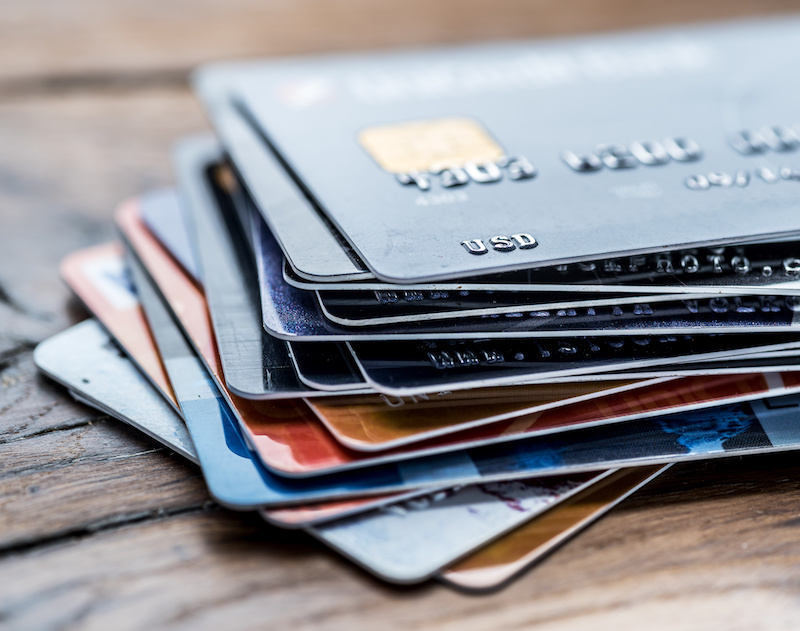- Essential purchases and bills are putting 48% of Aussies into credit card debt
- 24% can’t live week-to-week without a credit card
- 38% will still be paying off last year’s debt in July 2020
With the country facing the worst economic downturn since the Great Depression and millions now experiencing financial hardship, those with plastic debt have an additional concern. Concerning new research has revealed that, by July, 38 per cent of credit card holders will still be repaying their purchase debt from last year, and 21 per cent won’t pay off their debt this year at all.
The findings come from an independent survey of 732 Australian credit card holders commissioned by Money.com.au – an online finance information platform.
The long-standing debt is particularly worrying when the debt levels were revealed by Money.com.au to be relatively low. When respondents were asked what is the highest level of debt they had accumulated on their credit cards, 39 per cent said less than $2000, and 68 per cent said up to $5000. Just 9 per cent had accumulated more than $10,000 in card debt.
READ RELATED
- Great Aussie Credit Crush – are you in?
- Planning a wedding? Why a personal loan is better than putting it on plastic
Main expenditure category incurring credit card debt
The survey also revealed how much Aussies are becoming extremely dependent on their plastic. 24 per cent of respondents don’t think they can make ends meet on a weekly basis without a credit card.
Of more concern, 48 per cent of respondents admitted that the major expenditure category causing their credit card debt is essential purchases. Groceries and essentials are the main category incurring debt for 28 per cent of credit card holders, while 20 per cent say their debt is from insurance, internet, phone, energy and other utilities bills.
Around a third (36 per cent) of respondents said discretionary spend is the main expenditure incurring credit card debt for them. Specifically, this is holiday and leisure activities (chosen by 19 per cent), entertainment and dining (9 per cent), and non-essential shopping (8 per cent).
How much Aussies pay in interest
A significant proportion of Aussies are throwing wasted money on interest each year. The data revealed nearly a third (31 per cent) of credit card holders pay more than $360 a year in interest, on average, across all their cards. 18 per cent pay an average of at least $600 each year on interest, while a concerning 8 per cent pay $1200 or more each year.
Licensed financial advisor and Money.com.au spokesperson Helen Baker says Australia’s pre-COVID-19 credit card habits were already extremely worrying, and reveal the extent in which consumers were struggling with their debt prior to the financial hardships many are now facing.
“The fact that the major category incurring credit card debt for consumers are on essentials – including groceries, insurances, and utilities – tells us two different things. The first is that Aussies are struggling to make ends meet with their own paycheck, so they’re turning to credit to help them get by. This may be why a fifth of Aussies don’t think they’ll be debt-free this year, as they will continue to add to their debt by paying hundreds of dollars of essentials on it each month.
“However, the results could also indicate that a proportion of people had been using their credit cards to accumulate loyalty or frequent flyer points, rather than because of a lack of funds. The reason being is that 58 per cent are paying less than $120 a year, or less than $10 a month, on interest. This could suggest that these people are paying the majority of their balance off each month but are making most of their purchases on their card.”
Helen continues: “At a time when budgets may be tight for many households, the one positive thing is that spend on regular expenses such as petrol, entertainment and travel are likely to be significantly down. Many providers are also giving rebates on utility bills and renters also have the ability to reduce how much they’re paying. Now is the best time for Aussies stuck in a debt cycle to pay it off, so they can start fresh without debt once the economy returns to normal and spending temptations return.”
Helen reveals her top 4 tips to help Aussies get out of the debt cycle:
- Pay down your debt, don’t create more. The best thing credit card holders can do with their debt is to pay it off immediately, as interest is accrued at about 20 per cent. While some banks are offering customers the ability to waive late payment fees on credit cards and reduce minimum monthly repayments during COVID-19, it’s important that Aussies considering this option understand how it works and the repercussions this might have in the future. Payments are reduced, but interest isn’t deferred so that this could put some in a worse off position than they were previously and may take longer to pay off.
- Consider taking out a personal loan or roll your loan into your mortgage. A third (32 per cent) of survey respondents said they would have considered transferring debt onto a personal loan with a lower-interest credit card, when their credit card debt was at its highest. This is a good option for those who have large expenses to pay, as interest rates on credit cards are the highest among all financial products, and when not paid off in full each month, will continue to accumulate more debt. Alternatively, those with a home loan could consider rolling their loan into their mortgage – interest rates tending to be even lower than personal loans and credit cards. Those choosing this option need to be diligent to pay the extra amount quickly, so as not to drag the overall interest out for longer.
- Transfer debt onto a $0 balance transfer card. There are many interest-free balance transfer cards in the market that allow you to transfer your credit card debt and defer interest payments for six months. Those who are serious about paying off their debt could consider this option. However, it’s important that the debt is paid off within the given timeframe, or interest will be charged at a much higher rate. This type of card should be thought of as temporary – to help people clear debt then cut up the card.
- Make a budget and keep to it. Start by creating three budgets – absolute basics, moderate, and living the dream – and separating their expenses into these categories. Specific amounts (rather than percentages) should then be allocated on each expense, such as groceries, bills, petrol, and tracked over a one-month period. If a household has allocated $300 a week on groceries, but spent $350, they will need to look at their other expenses to see whether they can cut the $50 to cover the overspend. Keeping a budget and sticking to it will help you live within your means and not create further debt.
Read more of Life Begins At






















Add Comment